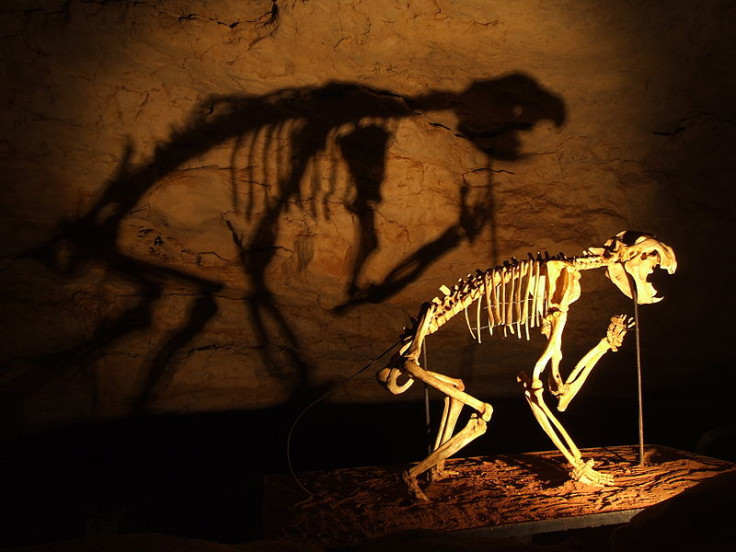Australia's 'marsupial lion' was a tree climber

A bizarre extinct predator that has been described as a "marsupial lion" was an excellent climber of trees and rocks, scientists say. The species, called Thylacoleo carnifex, was Australia's apex predator but went extinct some 46,000 years ago — a few thousand years after humans first arrived on the continent.
Weighing around 100kg, it had sharp claws and a powerful jaw that enabled it to hunt animals much larger in size than itself, such as the rhinoceros-like diprotodon.
But after analysing dozens of claw marks left by marsupial lions in a cave in Western Australia, palaeontologists now say they were also capable of climbing rocks and trees and that they reared their young in caves.
Professors Gavin Prideaux and Sam Arman, from Flinders University, published their analysis in the journal Scientific Reports.
'Excellent climbers'
Researchers studied the size, shape, depth and angles of the scratches left by the marsupial lions in a cave near Witchcliffe, Western Australia.
Many of the claw marks were found up to 3m (10ft) high above the cave's surface on an almost vertical rock leading to the cave's exit, leading researchers to conclude that they were proficient climbers.
"They could have chosen longer routes to the exit with gentler slopes, but the distribution of claw marks shows that, habitually they did not," Prof Arman told News.
"Clearly they were excellent climbers and would easily have been able to climb trees."

Prof Prideaux said it is possible the marsupial lions hunted humans as well. Rock art depicting a creature closely resembling the Thylacoleo carnifex was discovered in Western Australia in 2009.
He told Australian broadcaster ABC: "Most people don't even know they exist, yet we had this really extraordinary, carnivorous animal, top predator in Australia that suddenly we've shed some light on.
"This is a uniquely Australian animal... the most important thing for me about this was they were here when people first arrived and they lived with people for about 10,000 years, so it's interesting to imagine what kind of interactions would have occurred then.
"Debate about this animal's gone round and round and round and round based on the skeletons for 150 years. Now we've got a completely new line of evidence providing insights into its behaviour that you wouldn't have thought you'd be able to get if you hadn't travelled back in time."
© Copyright IBTimes 2025. All rights reserved.






















